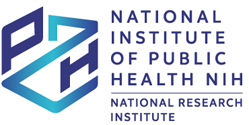Obesity and associated risk factors among women of reproductive age in Morocco
1
Joint Research Unit in Nutrition and Food, CNESTEN, RDC-Nutrition AFRA/IAEA, Rabat-Kénitra, Morocco
2
Ministry of Health, Rabat, Morocco
3
Higher Institute of Nursing Professions and Health Techniques, Guelmim, Morocco
4
Higher Institute of Nursing Professions and Health Techniques, Laâyoune, Morocco
Data nadesłania: 04-06-2025
Data ostatniej rewizji: 22-08-2025
Data akceptacji: 02-09-2025
Data publikacji online: 22-09-2025
Data publikacji: 07-10-2025
Autor do korespondencji
Kaoutar Benjeddou
Ibn Tofail University CNESTEN, Joint Research Unit in Nutrition and Food, RDCNutrition AFRA/IAEA, Rabat-Kénitra, Morocco
Ibn Tofail University CNESTEN, Joint Research Unit in Nutrition and Food, RDCNutrition AFRA/IAEA, Rabat-Kénitra, Morocco
Khalid El Kari
Ibn Tofail University CNESTEN, Joint Research Unit in Nutrition and Food, RDC-Nutrition AFRA/IAEA, Rabat-Kénitra, Morocco
Ibn Tofail University CNESTEN, Joint Research Unit in Nutrition and Food, RDC-Nutrition AFRA/IAEA, Rabat-Kénitra, Morocco
Rocz Panstw Zakl Hig 2025;76(2):177-187
SŁOWA KLUCZOWE
DZIEDZINY
STRESZCZENIE
Background: Obesity is a major global health concern growing in every region and affecting millions of people worldwide. It has become a pandemic. In 2022, 1 of 8 people in the world were living with obesity and more than half of the world’s population will be overweight or obese by 2035 leading to a total economic impact of US$ 4.32 trillion. Objective: This study aims to update data on the prevalence of overweight and obesity and the associated sociodemographic and economic factors in women of reproductive age (WRA) in Morocco. Material and Methods: A total of 2,172 women aged 18 to 49 years, representing all regions of Morocco, were enrolled. Socio-demographic and economic data as well as anthropometric measurements, specifically height, weight and waist circumference were collected. Results: Based on body mass index (BMI), 30.3% of women were classified as overweight and 27.8% as obese. However, based on specific predictive equation of body composition for Moroccan population, 61.6% of women showed excess of fat (mass fat ≥ 35%). Age and household-index were positively correlated to the prevalence of obesity and excess body fat, whereas education was inversely correlated to the prevalence of obesity and excess fat. In addition, urban area and being married seem to play a positive role in the increase of obesity rate. Conclusion: The prevalence of excess body fat is high among WRA in Morocco. This prevalence was impacted by age, education level, household-index, marital status and urban area. These factors highlight the complexity of addressing obesity and the need for comprehensive strategies that consider sociodemographic and economic factors.
Udostępnij
ARTYKUŁ POWIĄZANY
Przetwarzamy dane osobowe zbierane podczas odwiedzania serwisu. Realizacja funkcji pozyskiwania informacji o użytkownikach i ich zachowaniu odbywa się poprzez dobrowolnie wprowadzone w formularzach informacje oraz zapisywanie w urządzeniach końcowych plików cookies (tzw. ciasteczka). Dane, w tym pliki cookies, wykorzystywane są w celu realizacji usług, zapewnienia wygodnego korzystania ze strony oraz w celu monitorowania ruchu zgodnie z Polityką prywatności. Dane są także zbierane i przetwarzane przez narzędzie Google Analytics (więcej).
Możesz zmienić ustawienia cookies w swojej przeglądarce. Ograniczenie stosowania plików cookies w konfiguracji przeglądarki może wpłynąć na niektóre funkcjonalności dostępne na stronie.
Możesz zmienić ustawienia cookies w swojej przeglądarce. Ograniczenie stosowania plików cookies w konfiguracji przeglądarki może wpłynąć na niektóre funkcjonalności dostępne na stronie.



